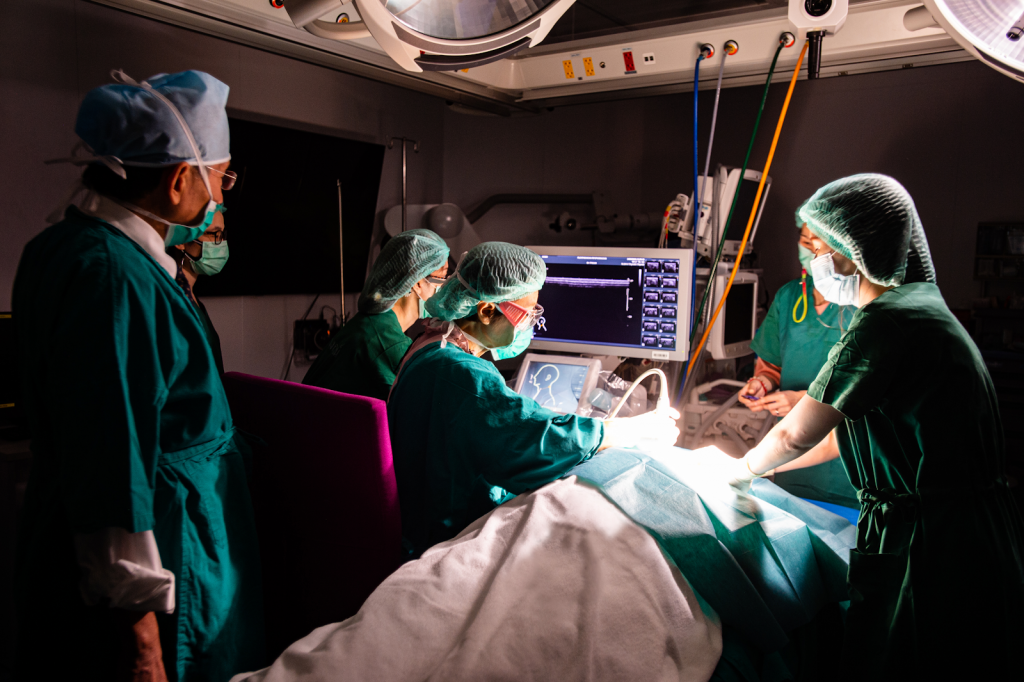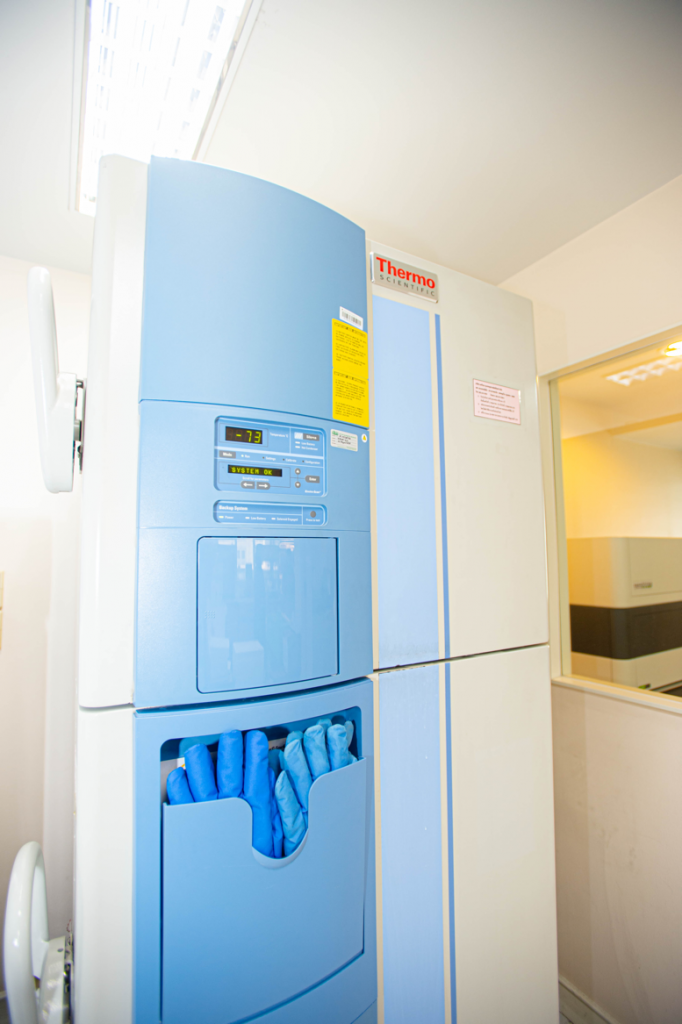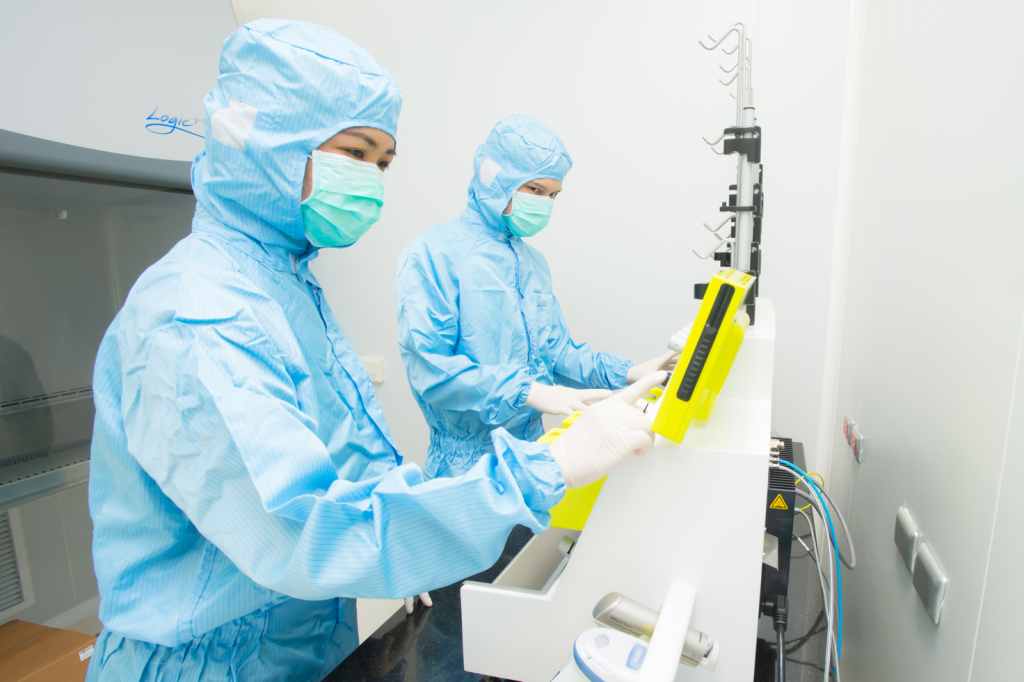The QSCBC is very active in post-graduate training and encourages young doctors, nurses and technical staff to do ongoing post-graduate training in Thailand or abroad at recognized centres, and post-graduate degrees at PhD level. Surgical training is offered to surgeons who have passed their Board exams. The QSCBC will shortly embark on the Surgical Fellowship programme.
The QSCBC organized Thailand’s first ever formal training course for nurse counselors in the field of ‘palliative and end of -life- care’.
The QSCBC regularly offers and organizes international seminars for nursing and medical staff nationally. International guest speakers have included Professor Michael Baum, Professor Martine Piccart, Professor Ian Frazer. Dr. Stuart Curbishley and Professor, Dr. Jolande de Vries.
An annual international guest lecturer is invited to give the annual Arkorn Huntrakul Lecture, a major donor of the QSCBC.
To celebrate the recent anniversary of ‘130 years of Thai –Japanese diplomatic relations’, the Queen Sirikit Centre for Breast Cancer (QSCBC) organized a combined breast cancer seminar with the Japanese Embassy. The symposium included lectures presented by Professor Mitsue Saito, Juntendo University School of Medicine, Tokyo and Professor Kris Chatamra of the Queen Sirikit Centre for Breast Cancer Centre (QSCBC) and was attended by doctors from hospitals across Thailand. The event was supported by H.E. Mr. Shiro Sadoshima, Ambassador of Japan.
1. Immunotherapy
A new treatment approach to breast cancer using natural dendritic cells with neoantigens to destroy malignant breast cancer.
2. Local Advanced Breast Cancer
A multidisciplinary approach to this debilitating condition.Combining chemotherapy and high dose irradiation, in addition to surgical removal of the tumour, with a wide excision which removes the tumour and the surrounding area. The large defect is closed with the patient’s own omentum and subsequently covered with a skin graft. The QSCBC has devised a technique to reduce the fluid loss from the wound dramatically, thus requiring less dressings and cut down the rate of infection to the minimum.
The success rate is 95 percent of healthy omentum survival.
3. Scalp Cooling for Asian Women to Prevent Hair Loss.
Scalp Cooling was found not to work for Asian women. The QSCBC following a research trial, redesigned the equipment and results showed an over 70 percent success in preventing hair loss.
The QSCBC, following a nursing team research trial, redesigned the scalp cooling equipment, to provide an over 70 percent success in hair loss prevention for Asian women, who previously did not respond well to the original equipment design. The research project is ongoing. The medical and nursing team, in conjunction with an engineer from the Thai Royal Airforce are redesigning a new skull cap to suit Asian cranial anatomy, to further improve the reduction of hair loss.
4. Intraoperative Radiotherapy
The QSCBC was the first centre in Asia to introduce intraoperative radiation for breast cancer, so far the team has completed 250 patients and the results compare very favourably with conventional radiotherapy for treating breast cancer. The QSCBC team has been looking into combining intra-operative radiotherapy with other modalities of treatment to further improve patients’ long term results, recovery and morbidity. This method of treatment has been more widely applied to the elderly cases of breast cancer and so far, the results are very encouraging. The elderly age group normally do not tolerate the full regimen of radiotherapy well and some even abandon the treatment before completion. Using this single application practically every patient is willing to accept the treatment.
5. Cryoablation
In 2021 cryo-ablation is being introduced into the QSCBC to treat small malignant breast cancer. The project is planned with the use of molecular breast imaging, so that small breast lesions can be identified and treated using cryoablation. The technique uses freezing breast tissue to form ice balls. As the ice expands the cells are burst and are destroyed.



